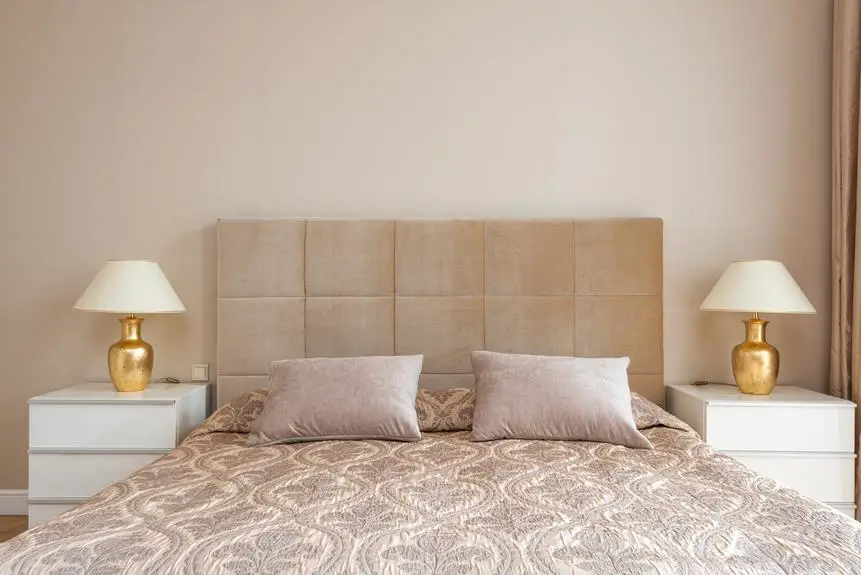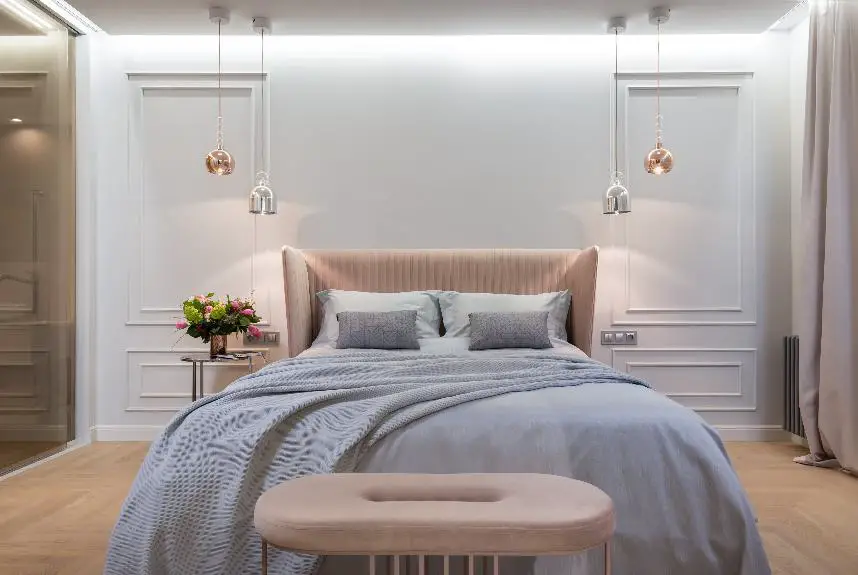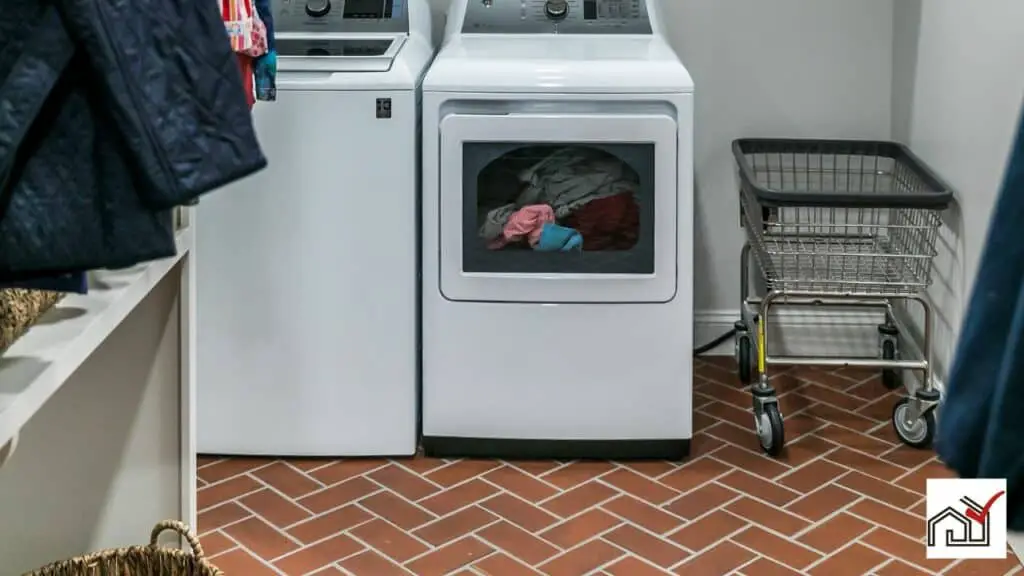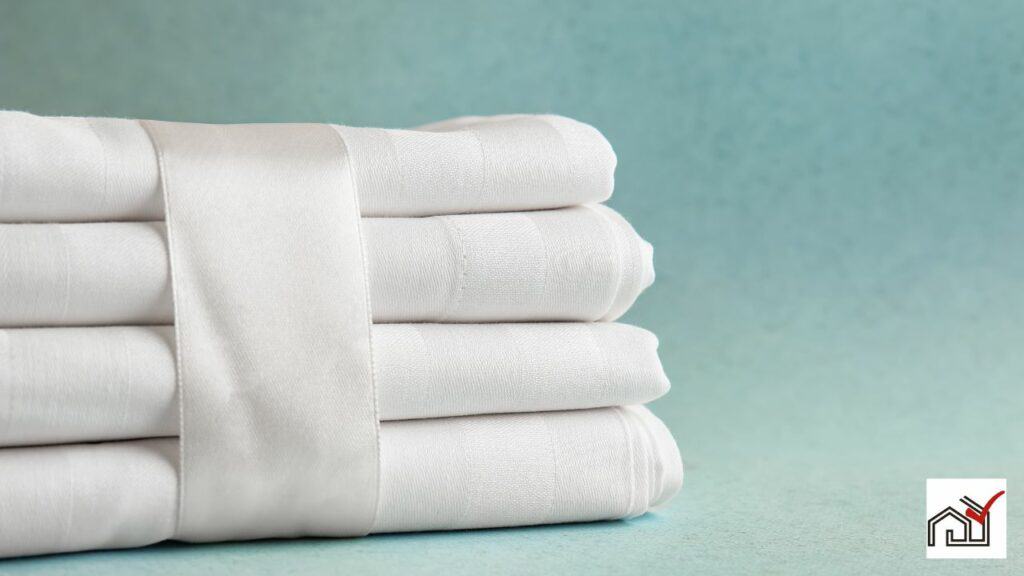To hang a headboard, follow these steps:
- Choose a headboard that fits your bed and matches your room's style.
- Gather tools: tape measure, level, drill, and mounting hardware.
- Mark the wall or bed frame for the headboard's position, ensuring it's centered and at the right height.
- Attach mounting brackets or hardware to the designated spots.
- Place the headboard onto the fixtures.
- Make any necessary adjustments for alignment and stability.
By completing these steps, you can install a headboard that enhances your bedroom's look.
Choosing the Right Headboard
When choosing a headboard for your bedroom, consider its compatibility with your bed frame, installation method, and design impact. The headboard affects the room's ambiance and practicality. It should also be structurally sound and easy to install.
For a king-size bed, a headboard can be a standout feature. A wooden headboard may add a sense of elegance, while an upholstered one can provide a softer appearance. The headboard's size should fit well with the bed and the room.
Installation practicality is important. Wall-mounted headboards are stable and fit well for larger or taller options, offering a consistent appearance. Headboards that attach to the bed frame are usually simpler to install and adjust, connecting directly to the bed.
Freestanding headboards can have shelves or storage, but they need more space and may not suit smaller rooms.
A headboard is a key decor element and adds to the bed's comfort and support. Choose one that complements your bedroom and fulfills your requirements.
Preparing the Installation Tools
Before starting the headboard installation, gather all necessary tools and hardware. This includes a stud finder to locate a secure point on the wall for mounting, a tape measure and pencil for marking the installation height, and a power drill with the correct drill bit size to match the wall mount screws. If your headboard has pre-drilled holes, align them with the wall mounts or bed frame.
For mounting, you may need a screwdriver, and for heavier headboards, French cleats or Z-clips are recommended for additional support.
Have these tools ready: stud finder, tape measure, pencil, power drill, drill bits, screwdriver, and mounting hardware.
Proper preparation will facilitate a timely and safe headboard installation.
Marking the Wall Position
Determine the desired height for the headboard, then use a tape measure to mark the exact spot on the wall where you'll install the mounting hardware. Measure from the floor, starting at 48 inches to mark the bottom of the headboard, or adjust based on preference and bed size.
Use a stud finder to find the wall studs where you'll need to drill for the mounting hardware. If using a French cleat or Z-clips, ensure the marks on the wall match the attachments on the headboard. For headboards that attach to the bed frame, measure carefully to align the headboard legs with the frame.
After locating the studs and deciding on the height, mark the wall with a pencil. Check these marks with a level to ensure they are straight and level with the bed.
Accurate wall marking is essential for a secure and well-aligned headboard installation. Proper measuring and marking save time and effort in future steps.
Securing the Mounting Brackets
After marking the wall, attach the mounting brackets with appropriate screws for your wall type (drywall, plaster, or masonry). If attaching to a bed frame, use metal brackets and bolts. Align the brackets with the headboard's holes and tighten the bolts without leaving exposed threads.
For heavy headboards, use strong hardware. L brackets can be used for a detachable headboard; they must be secured to both the frame and headboard. Ensure headboard and frame holes align to prevent instability. Insert bolts and tighten them firmly, making sure the headboard is stable.
For temporary setups, zip ties can be used, but for durability and safety, use correct mounting brackets to secure the headboard to the frame or wall.
Attaching the Headboard
After attaching the mounting brackets, align the headboard with the wall or bed frame. For wall attachment, locate studs for stability. Use a level to ensure the headboard is straight and mark the drill points. If connecting to a bed frame, match the headboard holes with the frame holes, using adapter plates or extension bolts if necessary.
Choose fasteners that suit the wall material and headboard weight. Drill holes, insert wall anchors if needed, position the headboard, and screw it in place. For bed frame attachment, insert bolts through matching holes and tighten nuts to secure the headboard. Reposition the bed for easier access if required.
Check all connections for stability. For freestanding headboards, drill holes or use adapter plates to match the bed frame. Screw the headboard or plates to the bed frame for a firm attachment. Once stable, push the bed back against the wall.
Final Adjustments and Checks
Secure the headboard firmly at a comfortable height and tighten all bolts to keep it in place. Check the height to ensure it is suitable for sitting back against without discomfort. Adjust the frame if the headboard is too high or too low relative to the mattress.
Confirm that the headboard is firmly attached to the bed frame with no wobble. If it moves, tighten any loose bolts to prevent injury or damage.
Align the headboard with the bed frame, ensuring it is wider than the bed for a balanced appearance. Use a level to check that the headboard is parallel to the bed and floor, adjusting if necessary.




